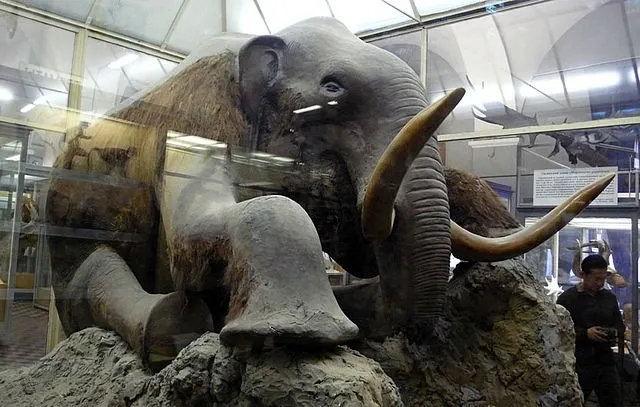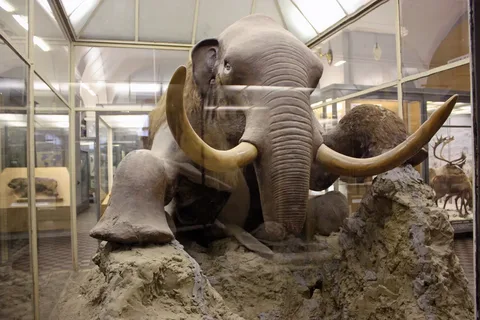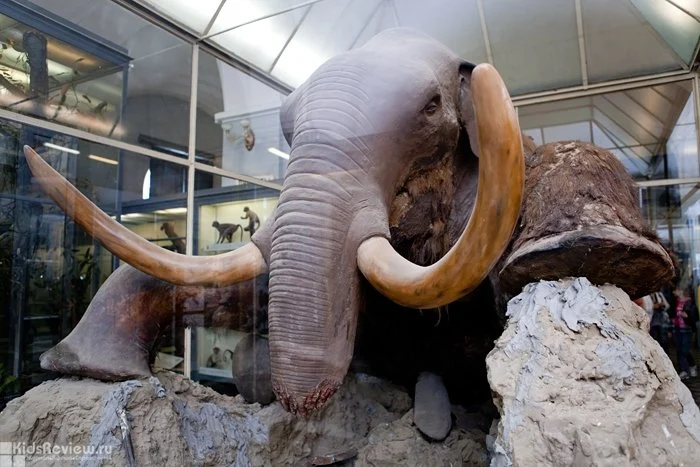Perfectly Preserved for 44,000 Years: What Froze the Mammoth in an Instant?
In the frozen wilderness of Siberia, where time seems lost in the cold winds and the thousand-year-old ice, there is a story that has lain dormant for millennia — a story about a giant creature, trapped between time… and absolute silence.

In 1900, by the icy Beresovka River, a group of hunters accidentally discovered something strange. They found neither treasure nor ancient relics, but the intact body of a woolly mammoth. Not only did it retain its complete shape, but it also carried with it timeless mysteries.
The animal did not lie like ordinary corpses. It sat sideways, its head slightly bowed, its hind legs broken — as if it had suddenly collapsed while walking. But what made people shiver even more was what was in its mouth and stomach. In its mouth were tiny wildflowers, and in its stomach were green grass, leaves, seeds… all intact, undigested. It ate, and then — almost instantly — froze. And for 44,000 years, time stood still beside it, in a cold, silent world of ice.

What could have caused such a huge creature, weighing up to 6 tons, to freeze in an instant? A climate collapse? A sudden volcanic eruption? Or a frozen landslide that buried it all? Scientists have proposed many theories, but no one really knows what happened. And that’s what makes the story so hauntingly mysterious.
Today, the mammoth’s body rests in a museum in Russia. But it’s more than just an ancient mummy. It’s a living reminder of the past — and perhaps the future. In the cloudy eyes that have closed, in the unfinished posture of a step, are thousands of questions: How has the world it once lived in disappeared? Are the grasslands and forests where it once fed still there? And are humans — as well as the giant elephants — moving step by step into a future that is suddenly frozen?

The story of the frozen giant is not simply an archaeological discovery. It is a sad love song of the Earth, a whisper from the Ice Age, reminding us that nothing is forever — not even creatures that seem invincible. The silence it carries is not the end, but an invitation for humans to listen — to listen to the past to understand the present, and to avoid falling into the same fate.

And so, somewhere, in the cold ice several meters deep, a step remains unfinished. A meal remains undigested. And a story remains unfinished.






